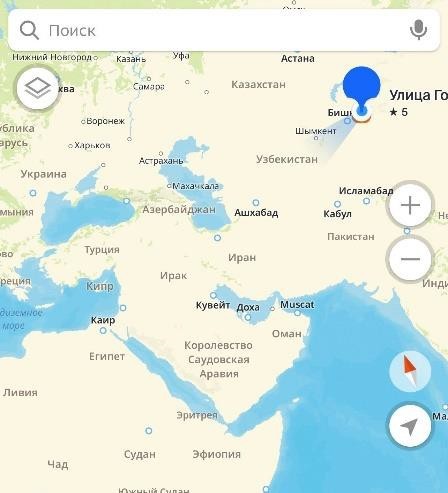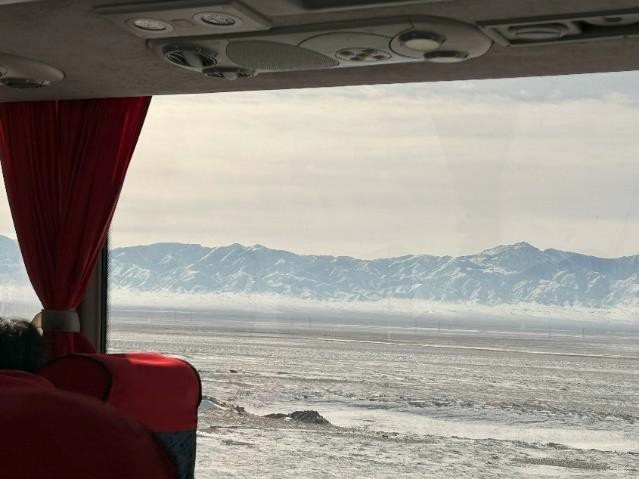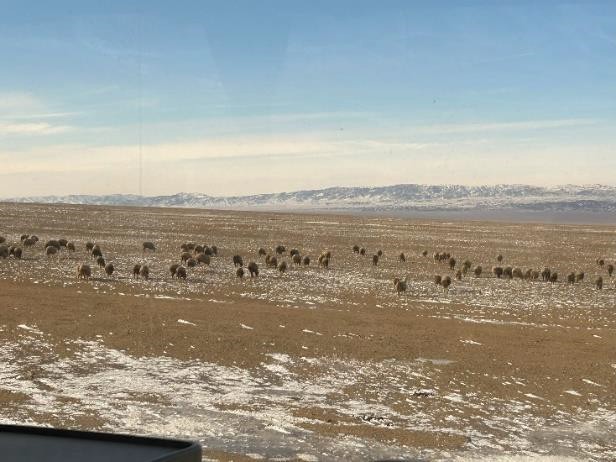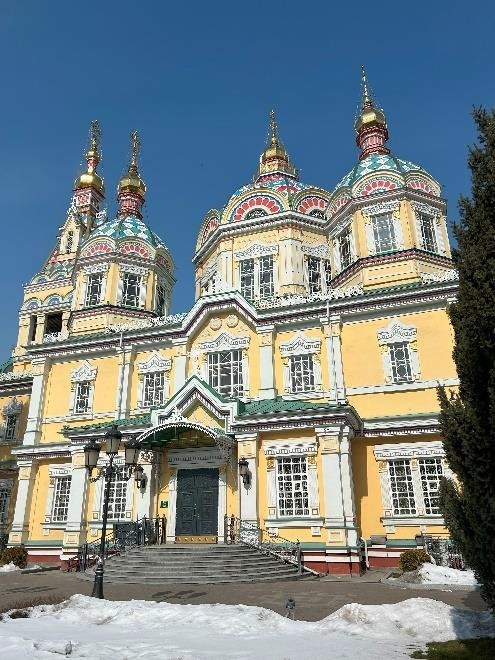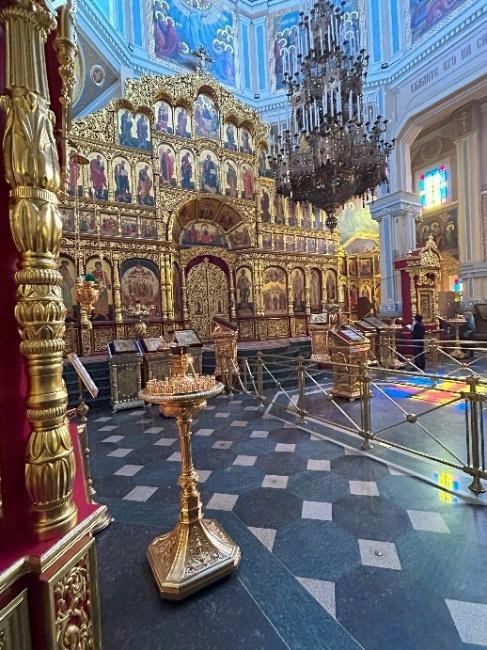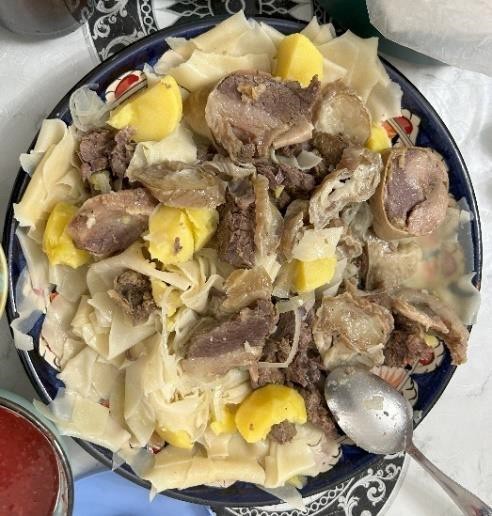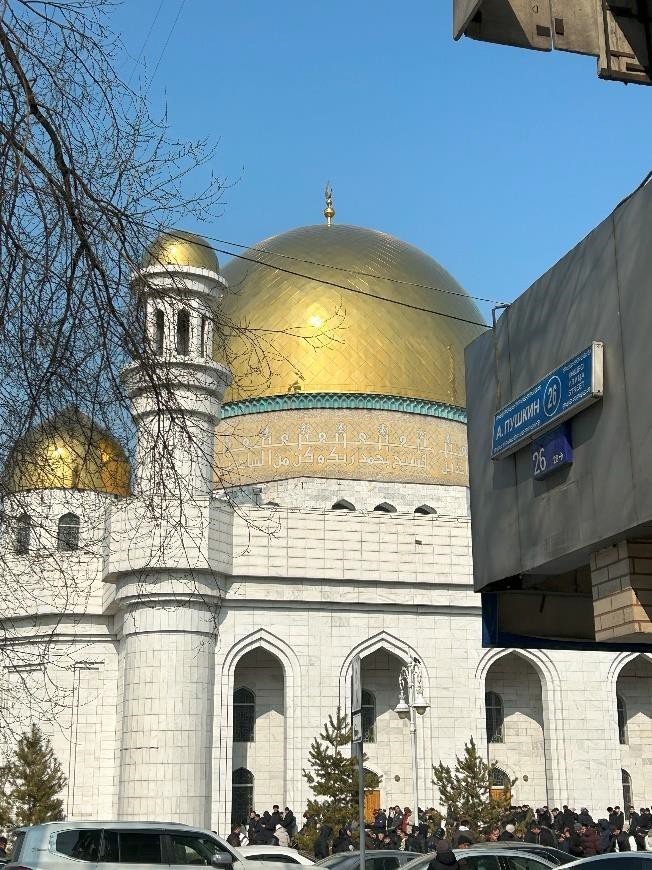Kazakhstan Language Training Report
School of Life and Environmental Sciences, College of Biologial Sciences
Watabe Koki (1st year)
On the way to the Charyn Canyon and Tumbartas ruins, you can see the steps from the bus as much as you want. This is a sight that you will hardly ever see in Japan. Often we saw groups of horses and sheep. The photo was taken in February, so there was still snow on the ground.
Scenery of Steps
The Voznesensky Orthodox Church is a wooden Russian Orthodox church built between 1904 and 1907. During the training, it is relatively easy to get there by bus, subway, etc. at the end of the class. Combined with its location and appearance, I think this is the place where you can most directly experience Russian culture in Kazakhstan.
Exterior and interior of Voznesensky Orthodox Church
It is a traditional dish with horse meat on top of noodles. It is often eaten at gatherings of people. In fact, on March 8, International Women’s Day, I received a beshbarmak with my host family’s relatives. Even on restaurant menus, I only saw dishes that were meant to serve multiple people. The texture of the noodles is similar to that of wide kishimen. It didn’t taste of spices. The savory flavor and saltiness of the horse meat makes it delicious and goes well with the noodles.
Besbarmak
The mosque is located a 10-15 minute walk from the Voznesensky Orthodox Church. On Fridays, people can be seen praying outside the mosque (see photo). Since the church is located close to each other, visiting both on the same day may give you a greater sense of Kazakhstan’s cultural diversity.
Central Mosque
As an aside, when I checked the direction of worship with GPS, it was really facing the direction of Mecca. Even though they were far away, I was personally moved by the fact that the whole world was praying for Mecca at the same time.